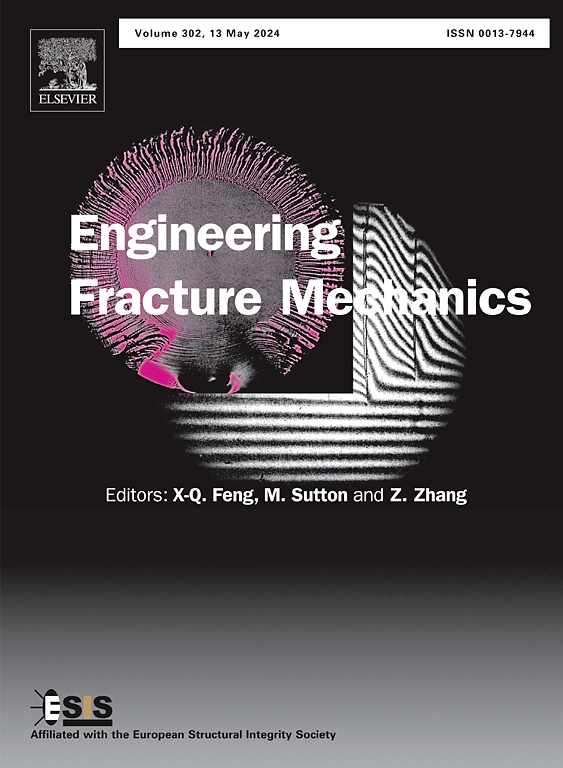Ti-6Al-4V扩散焊钛合金热变形断裂行为及机理
IF 4.7
2区 工程技术
Q1 MECHANICS
引用次数: 0
摘要
了解扩散焊Ti-6Al-4V的高温断裂行为对工艺优化和提高使用性能至关重要。本研究系统地研究了Ti-6Al-4V扩散结合材料在热变形作用下的断裂行为,表征并分析了低温高应变速率(1023 K, 0.1 s−1)下脆性断裂向高温低应变速率(1123 K, 0.01 s−1)下韧性断裂的断裂行为转变。利用光学显微镜(OM)、扫描电镜(SEM)、x射线衍射仪(XRD)和电子背散射衍射仪(EBSD)研究了微观结构机理。脆性断裂是由于扩散结合过程中形成的直晶界和弱节理的存在,促进了空洞沿结合界面的快速形核和聚并。相反,在较高温度和较低应变速率下,较大的平衡亚晶尺寸(λ)和增强的晶界滑动(GBS)驱动韧性断裂。这种组合减少了位错堆积,消除了sgb,促进了大晶粒内的连续动态再结晶(CDRX),从而协调变形,减轻晶体学错配,最终导致韧性断裂。本文章由计算机程序翻译,如有差异,请以英文原文为准。
Fracture behavior and mechanism of diffusion-bonded Ti-6Al-4V titanium alloy under thermal deformation
Understanding the high-temperature fracture behavior of diffusion-bonded Ti-6Al-4V is essential for process optimization and improving service performance. This study systematically investigates the fracture behavior of diffusion-bonded Ti-6Al-4V under thermal deformation, and a fracture behavior transition from brittle fractures at low temperature and high strain rate (e.g. 1023 K, 0.1 s−1) to ductile fractures at high temperature and low strain rate (e.g. 1123 K, 0.01 s−1) has been characterized and analyzed. Microstructural mechanisms are investigated using optical microscopy (OM), scanning electron microscopy (SEM), X-Ray Diffraction (XRD) and electron backscatter diffraction (EBSD). Brittle fractures are attributed to the presence of straight grain boundaries (SGBs) and weak joints formed during the diffusion bonding process, which facilitated rapid void nucleation and coalescence along the bonding interface. In contrast, ductile fractures are driven by larger equilibrium subgrain sizes (λ) and enhanced grain boundary sliding (GBS) at higher temperatures and lower strain rates. This combination reduces dislocation pile-up, eliminates SGBs, and promotes continuous dynamic recrystallization (CDRX) within larger grains, thereby coordinating deformation and mitigating crystallographic mismatch, ultimately leading to ductile fracture.
求助全文
通过发布文献求助,成功后即可免费获取论文全文。
去求助
来源期刊
CiteScore
8.70
自引率
13.00%
发文量
606
审稿时长
74 days
期刊介绍:
EFM covers a broad range of topics in fracture mechanics to be of interest and use to both researchers and practitioners. Contributions are welcome which address the fracture behavior of conventional engineering material systems as well as newly emerging material systems. Contributions on developments in the areas of mechanics and materials science strongly related to fracture mechanics are also welcome. Papers on fatigue are welcome if they treat the fatigue process using the methods of fracture mechanics.

 求助内容:
求助内容: 应助结果提醒方式:
应助结果提醒方式:


